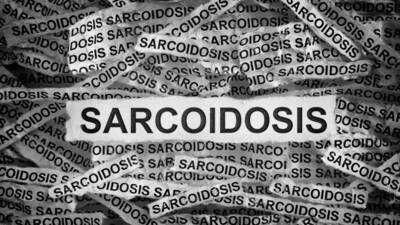
Sarcoidosis is an inflammatory disease that can range from being asymptomatic to causing severe complications. It occurs when clusters of immune cells, known as granulomas, form in various organs, most commonly the lungs. While many people experience mild symptoms or no symptoms at all, others may develop serious health issues.
A peer-reviewed study published in
Nature Reviews Disease Primers provides an in-depth analysis of sarcoidosis, highlighting its variable course and the factors that influence disease severity. The research shows that early diagnosis and appropriate management are key to preventing organ damage and improving outcomes for patients. It also emphasises that genetics, immune system overactivity, and environmental triggers may all contribute to the development of the disease.
These findings underline the importance of awareness, regular monitoring, and timely intervention in people who may be at risk of progressive sarcoidosis.
What is sarcoidosis, and how does it affect the body
Sarcoidosis occurs when the immune system overreacts and forms small clusters of inflammatory cells called granulomas in different parts of the body. The disease can affect multiple organs, including the lungs, lymph nodes, skin, and eyes. Although the exact cause is unknown, a combination of genetic susceptibility, environmental factors, and abnormal immune responses is believed to trigger granuloma formation. Understanding how sarcoidosis develops is important for recognising symptoms early and monitoring disease progression.
Common sarcoidosis symptoms you should know
Symptoms of sarcoidosis vary depending on which organs are affected. Common signs include:
- Persistent cough and shortness of breath
- Fatigue and unexplained weight loss
- Skin rashes, bumps, or lesions
- Swollen lymph nodes
- Eye irritation or blurred vision
Some people do not experience any noticeable symptoms, and the condition may only be discovered during routine medical examinations.
Sarcoidosis lung involvement and pulmonary complications
The lungs are the most commonly affected organs in sarcoidosis. Pulmonary sarcoidosis can cause persistent cough, shortness of breath, and chest discomfort. Over time, granulomas may cause scarring known as pulmonary fibrosis, which reduces lung function and can make breathing difficult. Severe cases may progress to respiratory failure, making early detection and ongoing monitoring essential for maintaining lung health .
How sarcoidosis affects other organs
Sarcoidosis can also impact the skin, eyes, heart, and nervous system. Skin involvement often appears as rashes, bumps, or nodules. Eye sarcoidosis may cause redness, pain, and vision problems. Cardiac sarcoidosis can lead to irregular heartbeats or heart failure. Neurological sarcoidosis, although less common, can cause seizures, facial paralysis or nerve damage. Recognising organ-specific symptoms allows for timely medical assessment and treatment.
Diagnosing sarcoidosis: Tests and procedures
Diagnosis of sarcoidosis combines clinical assessment, imaging, and, where necessary, biopsy. Chest X-rays or CT scans can reveal characteristic granuloma patterns. Biopsy of affected tissue confirms the presence of non-caseating granulomas, distinguishing sarcoidosis from other conditions with similar symptoms. Blood tests and lung function tests are often used to track disease progression and guide treatment.
Sarcoidosis treatment options for mild and severe cases
Treatment depends on severity and the organs involved. Many mild cases do not require medication and are managed through regular monitoring. For moderate to severe disease, corticosteroids such as prednisone are used to reduce inflammation. Immunosuppressive drugs, including methotrexate or azathioprine, may be prescribed for patients who do not respond to steroids. Biologic therapies are emerging as targeted treatments for resistant or severe sarcoidosis.
Long-term outlook for sarcoidosis patients
The prognosis for sarcoidosis varies widely. Many patients experience spontaneous improvement or stable disease. Others may develop chronic symptoms or permanent organ damage. Early diagnosis and timely treatment improve outcomes, while regular follow-up helps monitor organ function and detect complications. Understanding disease progression and recognising warning signs are key to maintaining long-term health.
When to seek help for serious sarcoidosis symptoms
Patients should seek medical advice if they experience worsening breathlessness, persistent cough, chest pain, irregular heartbeats, neurological symptoms or systemic signs such as weight loss and fever.
Prompt medical attention can prevent irreversible organ damage and improve quality of life.
Disclaimer: This article is for general informational purposes only and is not a substitute for professional medical advice, diagnosis, or treatment. Always seek the guidance of a qualified healthcare provider regarding any medical condition or lifestyle change.
Also read| Traditional Japanese samurai-inspired Rei Ho routine May Prevent dangerous falls in older people: Study
-
Sainsbury's, Morrisons, Aldi, Tesco supermarkets face Sunday opening times change

-
Newborn baby found dead in hospital bin as nurse makes horrifying discovery

-
Kerala: CM Vijayan must shed ostrich-like attitude, says LoP Satheesan

-
EPFO: Will you continue to get interest on your PF account even after you leave your job? Know what EPFO rules say..

-
Households urged to put beautiful plant in bathrooms to get rid of mould and bad smells
